Invented by Aaron Strand, Karl L. Linck, Judy Fischer, Thomas J. Spaeth, Jerry D. Kolbe, Sargento Foods Inc
Resealable bags have become a popular choice for packaging food products. They offer convenience, durability, and are an eco-friendly alternative to traditional packaging methods. The market for resealable bags to fill with food products has been growing steadily over the years, and it is expected to continue to do so in the future.
The method of using resealable bags is simple and straightforward. The bags are designed to be opened and closed multiple times, allowing consumers to access the contents of the bag without having to transfer them to another container. This makes them ideal for storing snacks, fruits, vegetables, and other food products that need to be kept fresh.
One of the main benefits of using resealable bags is their ability to keep food fresh for longer periods. The bags are made from high-quality materials that are designed to prevent moisture and air from entering the bag. This helps to preserve the freshness and flavor of the food inside, ensuring that it stays fresh for longer.
Another benefit of using resealable bags is their convenience. They are lightweight and easy to carry, making them ideal for on-the-go snacking. They can be easily stored in a purse, backpack, or lunchbox, making them a popular choice for school lunches and picnics.
Resealable bags are also an eco-friendly alternative to traditional packaging methods. They are made from materials that are recyclable and can be reused multiple times. This helps to reduce waste and minimize the impact on the environment.
In terms of the market for resealable bags, there are many different types and sizes available. Some are designed specifically for snacks, while others are designed for larger food items. There are also resealable bags that are designed for use in the freezer, which can help to preserve the freshness of frozen food products.
Overall, the market for resealable bags to fill with food products is growing, and it is expected to continue to do so in the future. The convenience, durability, and eco-friendliness of these bags make them an ideal choice for consumers who are looking for a convenient and sustainable way to store and transport their food products.

The Sargento Foods Inc invention works as follows
A reclosable bag that can be filled with at least one food item. A reclosable bag usually includes at least one sheet web material with at least two areas structural weakness. Between the two areas of structural weaknesses, at least one fold structure must be located. The fold structure is generally located opposite an opening. Reclosable bags also include a reclosable fastener with an integral skirt structure made of skirt web material. An integral skirt structure has a distal edge. The web material is attached to the distal margin at at least one point between the areas where there is structural weakness and the opening. The fold structure is extended beyond the areas of structural weakness by the reclosable fastener. The opening of the reclosable bag can be used to fill it with at least one food item. Alternately, the reclosable bag can include a gusseted section located generally opposite to the fold structure. The opening is located between both the fold structure & the gusseted part.
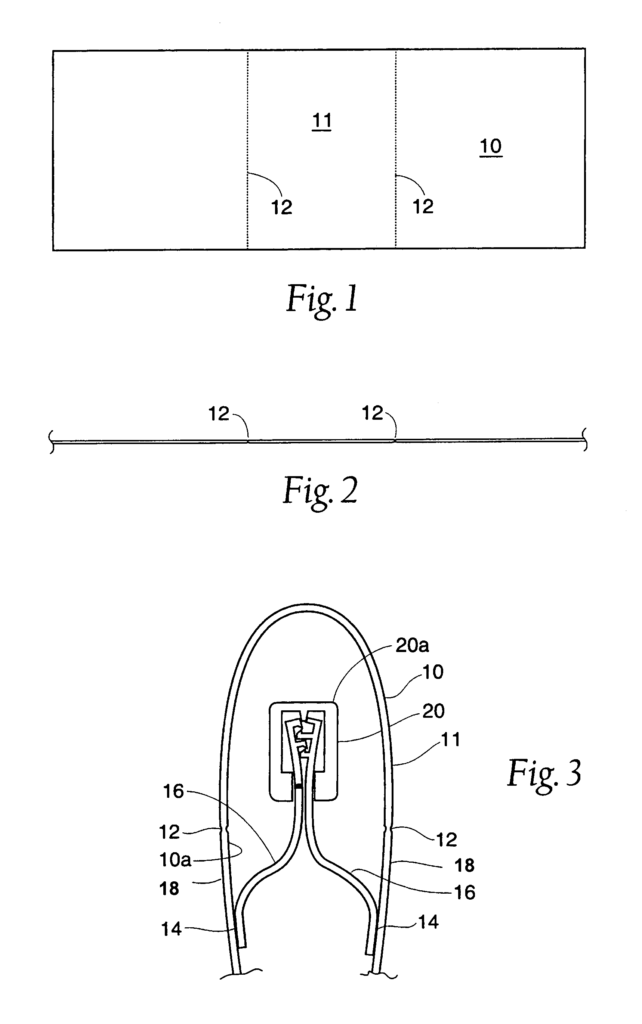
Background for Resealable bag to fill with food product(s), and method
The present invention is generally applicable to the field reclosable bags, more specifically reclosable fastener assembly or mechanisms that include tamper evident or hermetic seals or reclosable fastener systems or mechanisms of the slider or zipper or press-to close type. The invention is especially concerned with a bag that can be filled with food products at a factory, food processing plant, and sealed to keep the product safe until the customer buys the bag.
Reclosable and often flexible containers are well-known in the art. These containers typically consist of a bag-like structure, made from a folded web or material like thermoplastic film. These containers can also have reclosable zipper structures and interlocking male or female zipper elements that are fused, extruded, attached to the bag sidewalls. The reclosable zipper mechanisms, mechanisms, and assemblies can also be identified by the term slider closure systems. This is a closure system that uses form, fill, and seal technology and has two tracks that can be interlocked. A separate part (a slider), rides on the tracks and can be used to open or close the tracks. When the thermoplastic film is folded and sealed along its edges, a bag-like structure is formed.
Reclosable bags offer great convenience for the consumer. This is especially true if the food product/material contained in the bag is not all consumed at once. These bags are difficult to use because the food product must be hermetically sealed against air, atmospheric intrusion, transmission, bacteria, molds and/or other contamination. However, the bag can also have features that help the consumer to see evidence of tampering, without affecting the user’s ability to use the bag.
It is important to address this problem by creating a design that is simple to manufacture and can be used with existing types of packaging machinery that uses form, fill and seal technology, such as Horizontal Form Fill and Seal machines (HFFS), or Vertical Form Fill and Seal machines (VFFS). A design that can optionally be used with Horizontal Flow Wrapper machines (HFW), is also desirable.
Tamper-proof packaging may require multiple pieces of film that must be connected together. This can complicate the manufacturing process of the reclosable bag.
Gusseted packages offer additional convenience for the customer. Because of their wider base, gusseted packages can stand upright. When it is necessary to hold a package up by itself, this is possible. The gusseted package has a wider base that allows them to hold more product than traditional four-sided seal packages of similar dimensions. It was difficult to combine the convenience and portability of a zippered package in one gusseted, removable bag.
With a ‘press to close? The gusset-style zipper is a zipper that has a press to close feature. This package can be filled via the zipper. This type of package has been filled through an opened zipper. There have been many problems. It is important that the?press close? button be pressed during the packaging process. The zipper must be closed (i.e. The zipper must be closed (i.e., male and female profiles must be engaged) when the side seal is formed. Misalignment can occur if the male and female profiles do not engage. The result will be a package that leaks if the sides seal stations are not aligned correctly. The usual process of opening the zipper to fill it with a stationary blade is not an option after the side seal has been added. The zipper must be pulled apart from the side of the zip or held in place while the plunger is lowered into the top of the zip, forcing it open. No matter what method you use, there will be an unacceptable number of zippers that are damaged or unopened.
Product waste and contamination of zipper profiles is another problem that can be caused by the usual top-filling of the zippered bag. To solve this problem, filling processes can lower the fill tube inside the package and pass the zipper profiles to protect the product’s profiles. Although this technique reduces the possibility of product contamination, it does not completely eliminate it. Because of this, clearance must be maintained between fill tube and package walls in order to maintain consistency of tube insert and allow for exit passage for air from the package the product is replacing. Profile contamination is inevitable when air leaves the package to make space for the product.
The zipper being closed after product has been added to the zipper is a further problem. You can force the zipper to close by pressing down on both sides and in a direction that is parallel to the sides of your package. The zipper may not close consistently and zippers that close frequently may be pushed into the zipper profiles.
Gusseted packages with a slider-type zipper have additional filling issues. To open the profiles, the slider portion must be moved from one end of the package to another when filling this type of package. To close the top of the package, the slider must be rearranged after it has been filled. This is a costly and difficult process that renders top-filling zippered slider packages commercially unpractical.
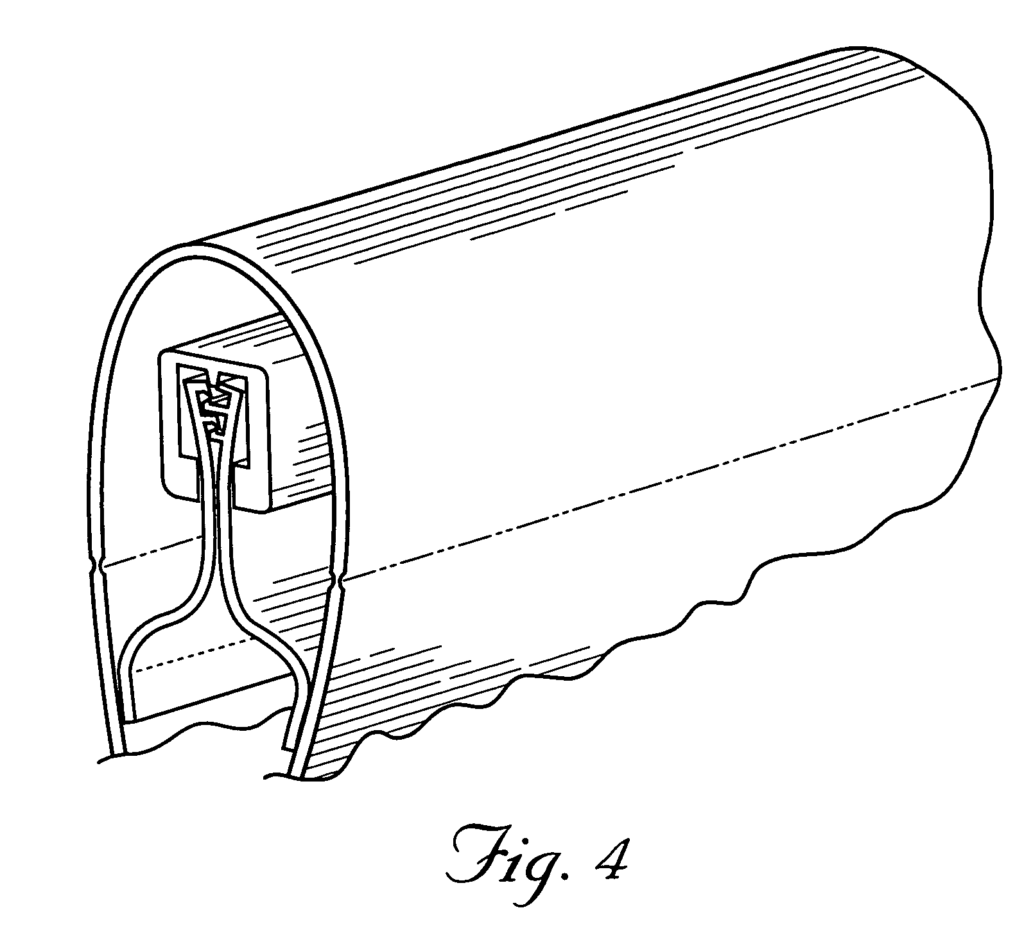
U.S. Pat. is the closest reference to gusseted packages.” No. No. No. No. 5,529,394 was issued on 25 June. 1996 and U.S. Pat. No. No. 5,417,040 was issued 23 May 1995. These patents are not intended to be a complete description of the advantages of a gusseted package. Because of their wider base, gusseted bags can hold more volume than traditional four-sided seal packages with the same height and width. These patents describe methods of filling the gusseted bags from the opposite side of the closure mechanism and the gusset side. The gusseted bag can be filled from the bottom side of the package. This allows product to stack upwards in the package, just like a traditional four-sided package. This results in a failure to fully benefit from the volume increase that the gusset offers.
It is the objective of the present invention that a reclosable bag can be made using existing packaging machinery. These machines include HFFS, VFFS, and HFW machines. A person skilled in the art will also be able to see the present disclosure in thermoform type machines, such as the one disclosed in U.S. Pat. No. No.
It is also my objective to use only one piece parent film and a single zipper assembly for the manufacturing task.
Further, the invention allows the manufacturer to include some or all of the following features in the reclosable bags that are produced: tamper resistance, evidence, hermetic seal and ease-of-use.
Easy use is another objective, especially for slider or zipper types structures or sliding type zips or fasteners. Although a sliding zipper structure is relatively simple to use, bag structures can have sidewalls or fin sections that extend beyond the zipper structure. This makes it harder for the user to access the food and makes it difficult to operate the zipper mechanism. This is particularly true if the person opening the bag has arthritis, is handicapped, or is unable to use the zipper mechanism.
Additionally, ease of access to the food products is a goal. The larger the zipper structure with its associated elements, the smaller the opening that allows the consumer to access them.
It is also our goal to provide a gusseted, reclosable package that can be side-filled with product.
It is also our goal to provide a transparent gusseted packaging that can be side filled, and prevent zipper profile contamination.
It is also our objective to provide a gusseted, reclosable package that can be side-filled to maximize the volumetric filling of each gusseted section.
It is the objective of the present invention that a gusseted, reclosable bag be provided. This can be manufactured using existing packaging machinery. Such machinery includes HFFS machines.
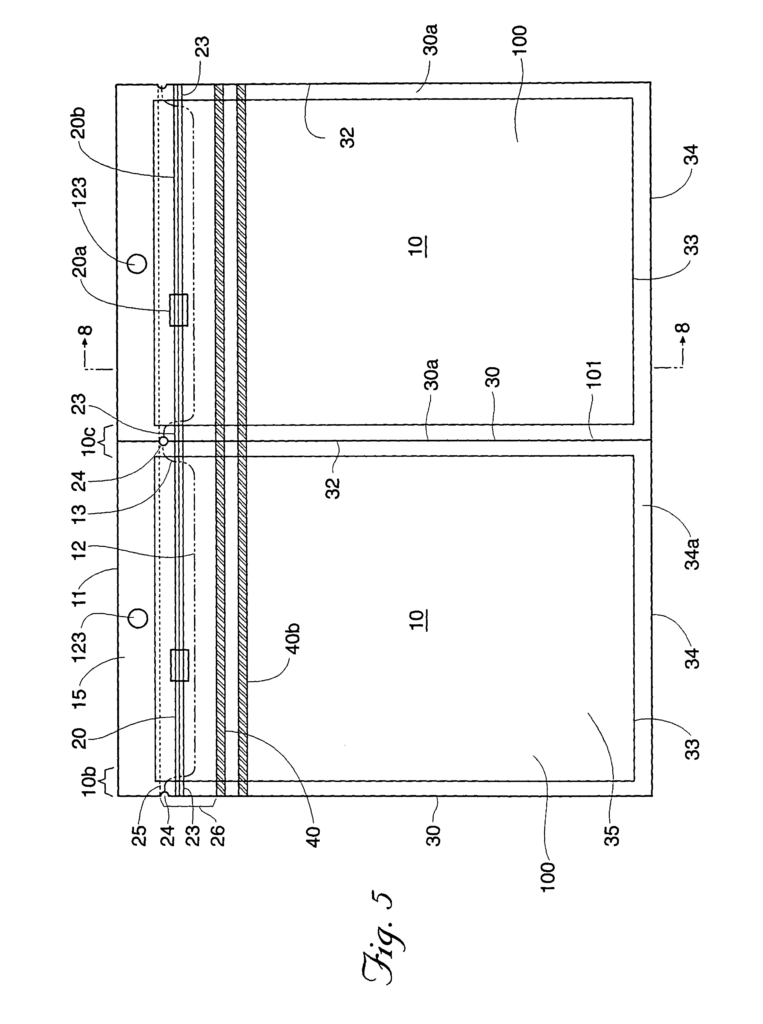
The invention of the present invention is thought to address these and other goals by the unique and simplistic structures and methods described herein.
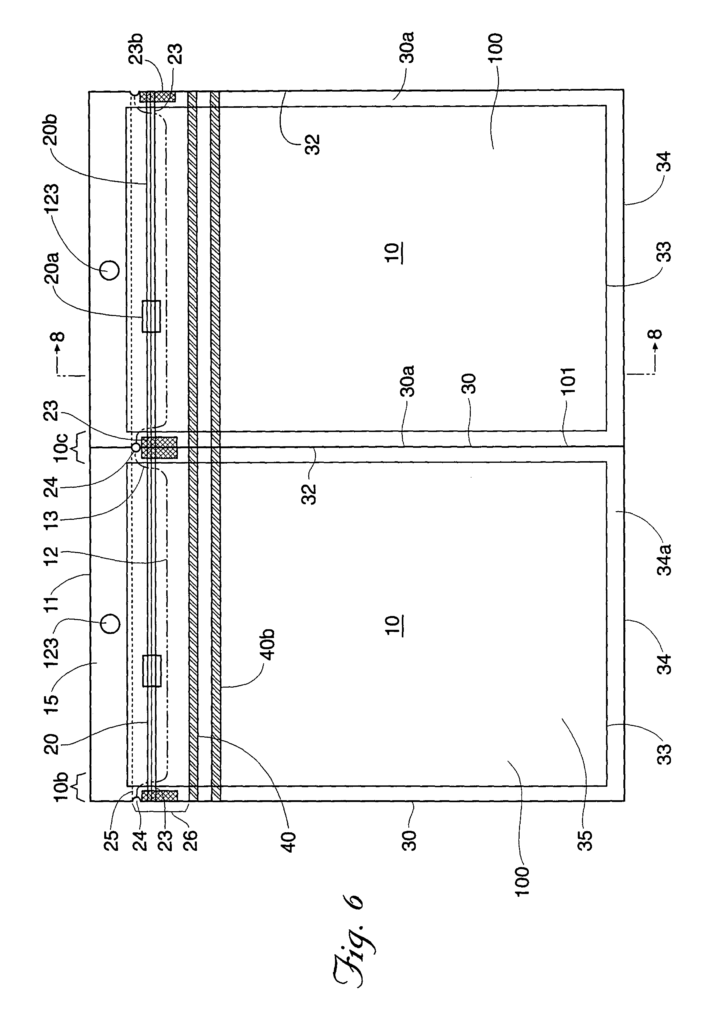
Click here to view the patent on Google Patents.
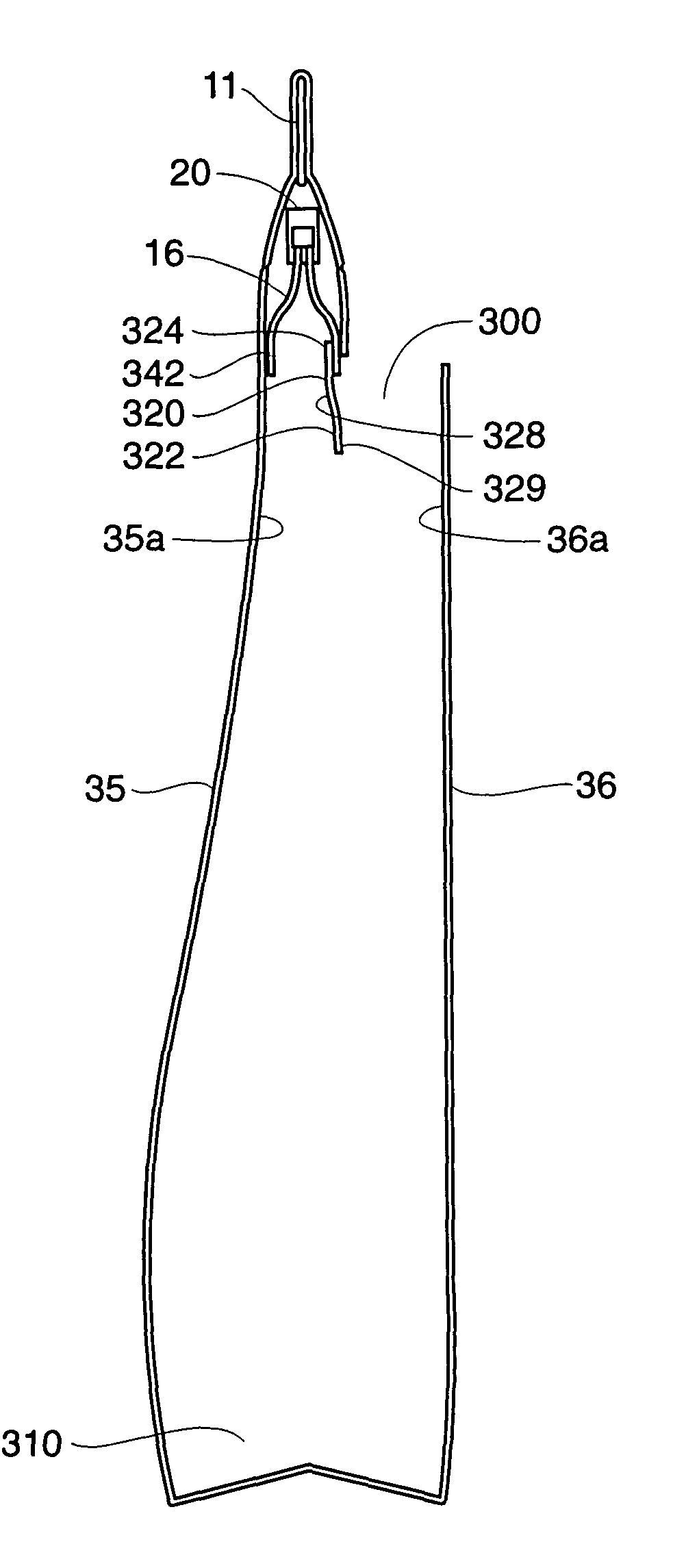
Leave a Reply